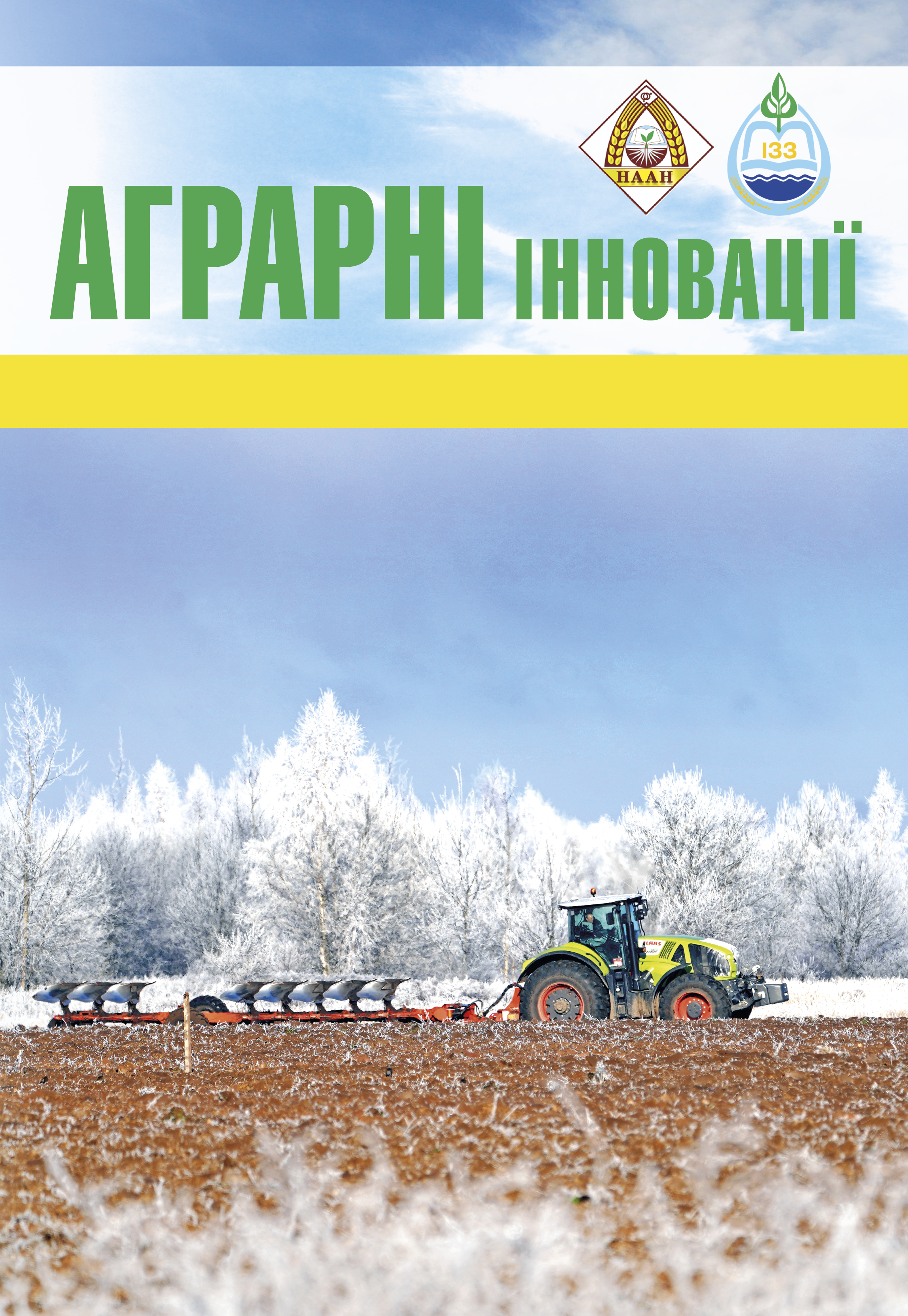Assessment of the adaptation capacity of mulberry (Morus L.) to reduced temperatures depending on plant age
Abstract
Purpose: The aim of the research was to study the effect of low temperatures on the black mulberry (Morus nigra L.) and the Istanbul pink mulberry (Morus rubra L.) varieties, determine critical temperatures, and assess their impact on the plants as a whole and their components, particularly on trees of different ages. Methods: The research was conducted from 2022 to 2024 at the experimental farm of the Institute of Horticulture of the National Academy of Agrarian Sciences of Ukraine, located in the Kyiv-Sviatoshynskyi district of the Kyiv region, in the northern part of the Right-Bank Forest-Steppe of Ukraine. The object of the research was the frost and winter hardiness of adult mulberry trees and their seedlings of two varieties. The potential frost resistance of mulberry shoots and buds was assessed using the direct freezing method on annual shoots at temperatures of ‑20, ‑25, and ‑30 °C. After freezing, cuts were made on the shoots and buds, and their analysis was carried out. Field assessment of winter hardiness was also conducted using a 6‑point scale. Results: Freezing of more mature trees showed that both varieties exhibited high winter hardiness, with slight differences between them. The total score in the control variant was 1.4 and 1.3 for «Krupnoplidna black» and «Istanbul pink,» respectively. In the variant with freezing at ‑20 °C, the «Krupnoplidna black» variety was more resistant with an average damage score of 1.6 compared to 4.4 in «Istanbul pink.» At ‑25 °C, the score was 6.0 for «Krupnoplidna black» and 4.8 for «Istanbul pink.» At more extreme temperatures of ‑30 °C, the total score was 9.6 for «Krupnoplidna black» and 10.9 for «Istanbul pink.» Based on these results and observations in real field conditions, both varieties can be classified as frost-resistant. The study revealed no significant correlation between the type (thickness) of the initial cutting and the seedling’s winter hardiness. Similarly, the planting density had little impact on cold tolerance. The leading role in this case was played by varietal characteristics. Plants of the «Istanbul pink» variety showed slightly lower cold resistance compared to the «Krupnoplidna black» variety, with a difference of one point in the score. One‑year‑old trees of both varieties showed necrosis and some wilting of the apical part, which is threatening for further growth and development of the seedling. Conclusions: Adult trees of both investigated mulberry varieties, starting from the age of 2, exhibit high winter hardiness, enter a state of dormancy before the onset of frost, and do not require any protection. However, one-year-old seedlings, in the conditions of the Right‑Bank Forest‑Steppe of Ukraine, are vulnerable to the influence of sub‑zero temperatures and temperature fluctuations. There was observed a varietal dependence of tree resistance to low temperatures. Thus, young trees of the «Krupnoplidna black» variety are more resistant to frost damage compared to the «Istanbul pink» variety by one point difference.
References
2. Рудник-Іващенко О. І. Чи можна отримати високі врожаї за умов змін клімату. Київ: Хімія, агрономія, сервіс. 2012. С. 38-41.
3. Гордієнко Н. М., Бондар А. О., Гордієнко М. І. Інтродуценти в дібровах Полісся та Лісостепу України / за ред. Н. М. Гордієнка. Київ : Урожай, 2001. 448 с.
4. Іващенко О. О., Рудник‑Іващенко О. І. Напрями адаптації аграрного виробництва до змін клімату. Вісник аграрної науки. 2011. № 8, С. 10-12. https://agrovisnyk.com/oldpdf/visnyk_08_2011.pdf
5. The encyclopedia of weather and climate change: a compl. visual guide /auth.: J. L. Fry [et al.]. (2010). Berkeley; Los Angeles: Univ. of California Press, 512p.
6. Китаєв О. І., Лагутенко О. Т., Чорний І. Б., Дідичук М. О. (2015). Морозостійкість рослин видів роду Ribes L. в умовах північної частини Лісостепу України. Київ: Садівництво, № 70, 182 с. https://enpuir.npu.edu.ua/bitstream/handle/123456789/14786/Lagutenko_Morozostijkist%27%20smorodyny.pdf?sequence=3&isAllowed=y
7. Бублик М. О., Патика Т. І., Китаєв О. І. та ін. Лабораторні та польові методи визначення морозостійкості плодових культур і порід: метод. рекомендації. Київ : Інститут садівництва НААН України, 2013, 26 с.
8. Приседський Ю. Г. Статистична обробка результатів біологічних експериментів. Донецьк : Кассиопея, 1999. 210 с.
9. Долгова Л. Г., Зайцева І. О. Оцінка посухо- та зимостійкості деревних екзотів, інтродукованих у степову зону. Науковий вісник Ужгородського університету. Ужгород, 2008, 104 с.






